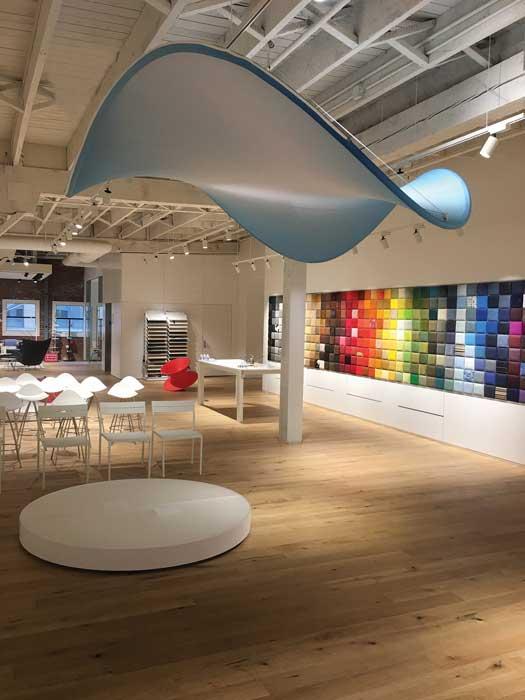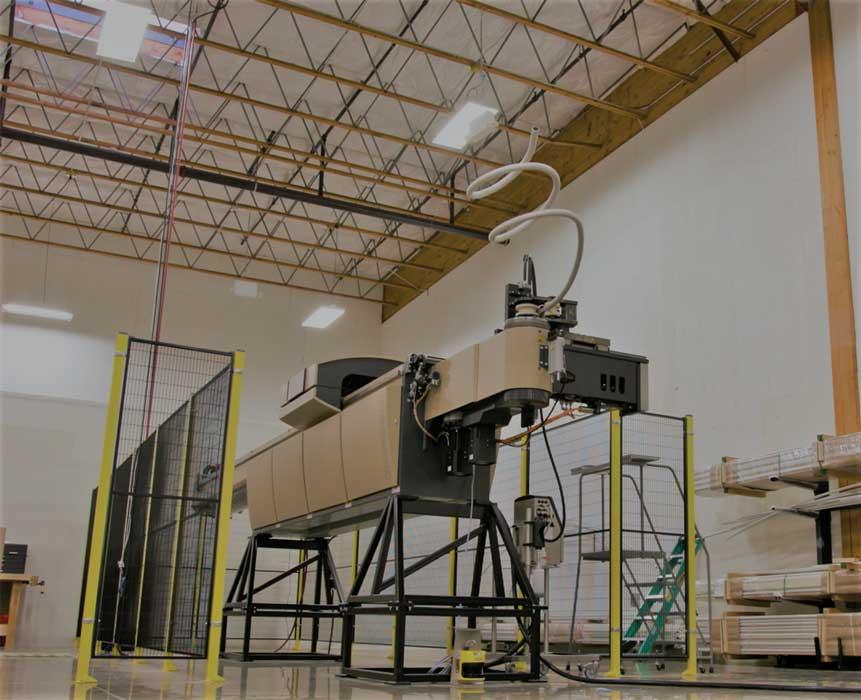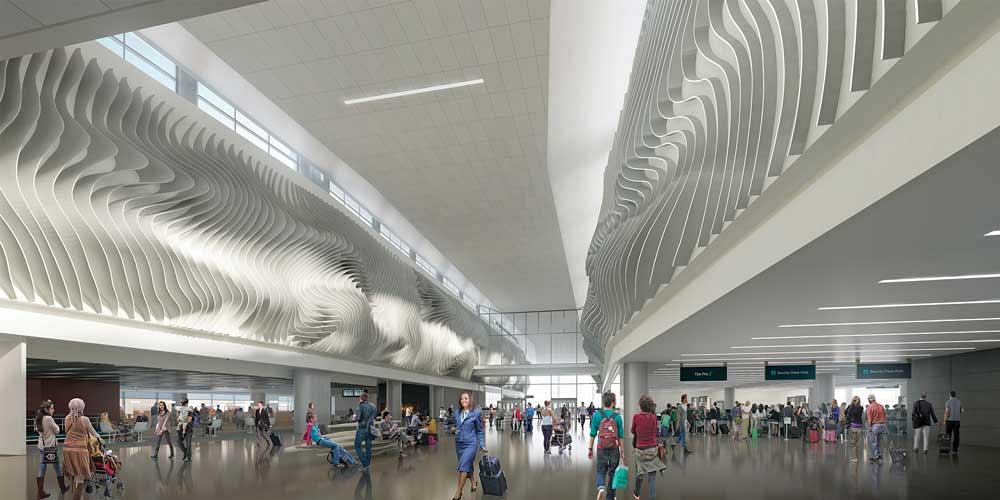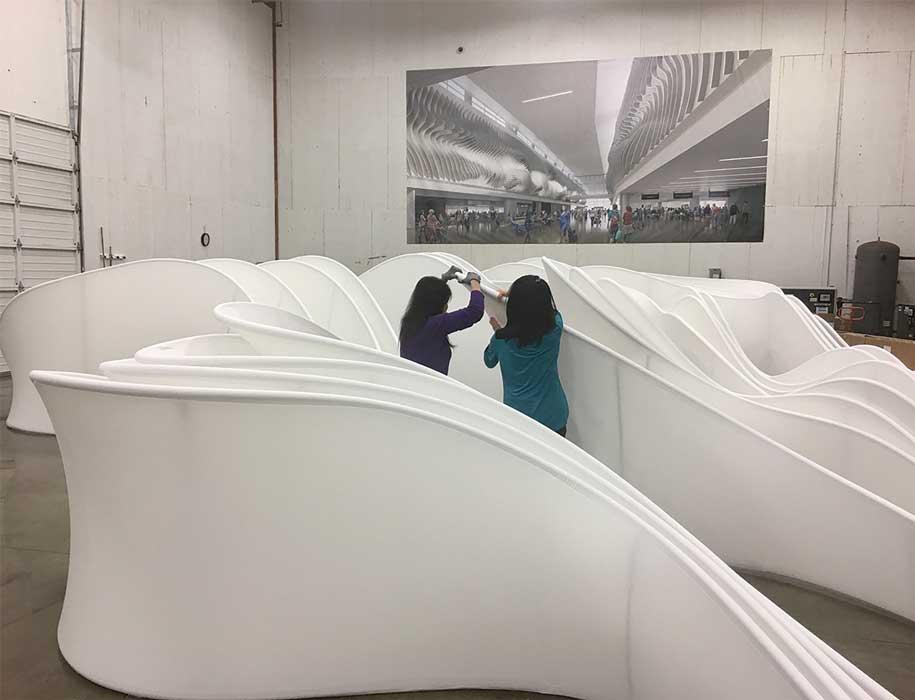- FMA
- The Fabricator
- FABTECH
- Canadian Metalworking
Categories
- Additive Manufacturing
- Aluminum Welding
- Arc Welding
- Assembly and Joining
- Automation and Robotics
- Bending and Forming
- Consumables
- Cutting and Weld Prep
- Electric Vehicles
- En Español
- Finishing
- Hydroforming
- Laser Cutting
- Laser Welding
- Machining
- Manufacturing Software
- Materials Handling
- Metals/Materials
- Oxyfuel Cutting
- Plasma Cutting
- Power Tools
- Punching and Other Holemaking
- Roll Forming
- Safety
- Sawing
- Shearing
- Shop Management
- Testing and Measuring
- Tube and Pipe Fabrication
- Tube and Pipe Production
- Waterjet Cutting
Industry Directory
Webcasts
Podcasts
FAB 40
Advertise
Subscribe
Account Login
Search
3D metal tube bender expands market presence for manufacturer
Freeform bender imparts smooth-flowing multiradius bends
- By Eric Lundin
- March 13, 2019
- Article
- Tube and Pipe Fabrication

Rainier Industries, Seattle, thrives on making custom, one-of-a-kind products for its customers, while continuing to make its own products, such as its cloud sculptures. Intended to enhance any space, they have aesthetic and acoustic properties.
Gold was discovered in the Klondike region of the Yukon Territory in 1896; 120 years later, artist Gordon Huether landed a contract to design a vast artistic display for the Salt Lake City airport. Although these two events don’t seem to be related in any way, one led to the formation of a company now known as Rainier Industries, Seattle, while the other is a showcase example of Rainier’s versatility as a builder of awnings, shelters, and displays.
Rush to Riches
When news got out that gold had been discovered in the Klondike, it was like 1849 all over again. The main difference was that this time around the miners weren’t seeking fortunes in the relatively moderate climate of Coloma, Calif., near Sacramento, where the annual temperature variation runs from lows around 40 degrees F in January to highs in the 90s in July. The 1896 influx (some would call it a stampede) of 100,000 would-be miners to the Yukon Territory had to deal with severe conditions. An overnight temperature of -10 degrees F in January would be somewhat mild compared to the average January low temperature.
Certainly more than a few of these adventurers and fortune-seekers weren’t prepared to cope with the journey, first traveling by boat and then traversing Alaska, much less spend a year or so camped out in the middle of nowhere. Accordingly, entry to Canada was permitted only when the prospective miner could demonstrate that he had come prepared with a year’s worth of provisions in tow, and this is how Rainier struck metaphorical gold. A tent-making company, it did brisk business in selling shelters to the many hardy souls who were buying equipment before leaving the Lower 48.
For many, this get-rich-quick scheme yielded little more than exhaustion, frostbite, and debt. By 1898 many prospectors had given up and were traveling the other direction, returning home, unable to make a living. This trend made the headlines, too, and before long the torrent of arrivals became a trickle.
The gold rush came to an end. Rainier didn’t.
An Intense Beginning
Although the Klondike gold rush lasted just a couple of years, it lasted long enough for Rainier to establish a foothold in the tent-making market. From there it was just a matter of branching out. Rainier saw the potential in another application that relies on a frame that supports fabric—awnings—which would turn out to be a lucrative and enduring market.
In that era, manufacturing tended to be local. Ordering products from distant suppliers and having them shipped great distances simply wasn’t nearly as common then as it is today, so for many products, distribution was local and manufacturers had much less competition. Manufacturers of all sorts that were financially conservative, reasonably diversified, and moderately dynamic were in a position to thrive for decades. It’s a common theme in the awning industry.
“Many of the companies that are in the awning business today were in the awning business 100 years ago,” said Bruce Dickinson, vice president of Rainier.
Throughout most of Rainier’s history, it looked for other applications for fabric. These days it continues to make tents and awnings in business units it describes as shelter and shade. A third business unit, display, focuses on sales to retailers but has many customers in diverse markets.
The company makes many sizes of tents, from small sizes that shelter just a few people to behemoths up to 100 feet wide. Its shade division makes awnings, retractable screens, and other products designed to provide relief from wind, rain, and sun.

A series of hockey pucks and a free-form sculpture show off the best of Rainier—custom-made displays that use bright, vibrant images on fabric and a flowing, 3D creation made from tube.
The company also makes many industry-specific products. For example, aircraft manufacturers buy custom-made shelter products that cover portions of an aircraft during construction, keeping dust and debris at bay. Rainier also makes another line of products, sandbags, that aircraft assemblers need to keep the first product in place.
Its projects and products are supported by fully equipped woodworking and metalworking shops. Metalworking capabilities are cutting (including waterjet), routing, welding, laser etching, and powder coating.
Printing. This is where it gets really interesting. While Rainier was founded on a single product that used a single fabric, most likely in a single color, these days the company is tremendously diverse in its product offerings. It can print essentially anything onto its fabrics, such as patterns, text, and images, in endless variations and combinations. The fabric feeds off a roll, runs through the printer, and out comes a finished product that is ready to ship or a semifinished product that is ready for cutting, sewing, and assembly to make a finished product. A typical finished product is wallpaper, while semifinished products are any of the myriad products for shade, shelter, and display.
Another product is similar to wallpaper, but it’s not glued to the wall. Imagine covering a wall in an office building with a fabric bearing an image of an interesting landscape, a stunning photo of an urban scene, or a visual representation of the company’s products and its logo. Heck, imagine all three, because this sort of wall covering is temporary, held in place in a vinyl track. Simply tug at the material to pull it out of the track; roll it up and put it into storage; and pull out another one, unroll it, and install it. Same wall, new look, endless variations.
The company also uses its printing capability for all sorts of unique, often one-of-a-kind, applications. A series of displays for the National Hockey League (NHL) showcases the company’s skill sets and its penchant for problem-solving.
“Each display has an image of one hockey player,” Dickinson said, referring to a circular item that looks an awful lot like a hockey puck, right down to the knurled edge complete with an NHL logo. About 42 inches in diameter, each is based on a pair of circular aluminum frames and an aluminum base and is built for display in arenas or stadiums that host all-star or NHL Winter Classic® games. The puck’s edge is made from Sintra®, a flexible polyvinyl chloride product that lends itself well to printing, painting, routing, and forming.
“The NHL wanted these to look realistic, right down to the chamfer,” Dickinson said. Running a router over it to create the chamfer wasn’t a problem, but the process discolored the material slightly, leaving streaks and swatches of gray where the router had stressed the puck’s surface. A Rainier brainstorming session yielded a solution that provides a durable finish: the spray-on product used by many pickup truck owners to protect the bed from scratches and dings. The result is a deep, rich black, somewhere between glossy and matte, that bears a remarkable resemblance to a hockey puck that hasn’t been marred by its first face-off.
Art and Architecture. “Artists and architects love metal,” Dickenson said. “It’s really hot these days. It’s everywhere.” Sometimes it’s in the form of a sculpture, sometimes it’s a façade, and often it’s an integral part of a building. In many cases, exposed metal is both structural and artistic—the foundation for the project’s aesthetic.
Many public buildings, such as hospitals, airport terminals, and academic halls at universities, are vast, and these days some of the space usually is set aside for attractive visual elements. To meet a basic need, that of healthcare, transportation, or education, such a building doesn’t have to be any more attractive than a warehouse or a parking garage, but these days they have to do more than merely meet basic needs.
“Gordon Huether said it best,” Dickenson said. “He said that airports aren’t just airports, they’re society’s cathedrals.” Although many travelers merely travel from place to place, many are choosy, picking routes carefully.

Rainier’s freeform bender is mounted on stands to allow exceptional latitude for bending in every dimension.
“Airports have to compete these days, Dickinson said. “Some are just comfortable,” he said citing an airport in his neck of the woods, the Seattle-Tacoma International Airport. A spacious children’s play area at the intersection of the A and B concourses is decked out with windows that run floor to ceiling, providing a stunning view.
The artistic portion of a public works project doesn’t necessarily sound like much; often it’s just 1 percent of the total budget, according to Dickinson. By itself, 1 percent isn’t all that attractive, but context can change everything. For example, if the project’s budget is $10 million, 1 percent stands to attract more than a few bids from fabrication shops that cater to this market.
The Canyon
One such project, which has been fabricated but not yet installed, is The Canyon, designed by Huether for Salt Lake City International Airport. Intended to evoke the landscape in and around Salt Lake City, it has a flowing form similar to patterns of windblown sand or, perhaps a nod to mathematics, somewhat reminiscent of a fractal. At 362 ft. long, the project comprises 412 individual and unique elements made from seven miles of aluminum tubing and covered by 2.5 acres of a composite fabric.
Each of 412 finlike forms has a unique shape, and many are bent on three axes. The lack of repeated contours, coupled with 3-axis bending, adds a dynamic element of visual interest critical to the project’s aesthetic appeal, but at the same time it adds a dynamic level of complexity that compounds the difficulty of making each of the 412 forms. Rainier went into the project planning to do all of the bending manually, but somewhere along the line the executive team decided to look for a machine that could handle such bends.
In looking for a process faster than manual bending, the Rainier staff initially considered a collet-based bender that excels in this sort of work. However, the collet needs a lubricant and the subsequent removal of 100 percent of the lubricant from every square inch of every tube’s surface. Removing all of the lubricant was estimated to be a bit too burdensome for such a large project.
In an effort to find another bender, one of Rainier’s engineers made the trip to Düsseldorf, Germany, to visit the biennial Tube® expo. Because this sort of bender is uncommon, the engineer nearly returned home empty-handed. He was about to leave the expo when his eye caught an extraordinary length of bent tube, a bit of eye candy in a tube producer’s booth, and from there he made his way to Dynobend’s display. The company didn’t have that particular machine in its booth, but that wasn’t a big obstacle. The next day he made his way to the company headquarters in the Netherlands to see the bender in action.
The machine Rainier chose is a Dynobend model CB 60, which uses a feed carriage that forces the tube forward and rotates it while using three continuously variable bending rolls to form it. The hardware and software deliver parts that are nothing short of spectacular—straights become bends with no discernable transitions between the two, and the bends can become increasingly severe as the radius shrinks, then gradually less severe as the radius grows, and this occurs in three dimensions. Making a regular shape, such as a corkscrew, would be impressive enough, and the bender can make such a form, but this is just the beginning. Many artists—and a few architects—thrive in working on projects that are unpredictable, asymmetrical, and unbalanced. The machine isn’t necessarily better at 3D bends than 2D bends, but knowing that a freeform bender can make unusual and somewhat chaotic designs is a big part of the appeal of this type of machine.
At Rainier, the bender is mounted on 30-in. stands. This doesn’t seem like much height, but indeed the machine towers over the operator, who needs a ladder to load it. An unusual placement for a fabricating machine, it suits the nature of Rainier’s tubular work. Elevating the bender by 30 in. makes the machine much more versatile, reducing the likelihood of interference between a workpiece and the floor.
Although an every-component-is-unique project doesn’t seem to have much in common with a typical manufacturing program, it does have many of the same considerations. The fabrication company’s staff has to take a long view, looking at bending, related or peripheral processes, logistics, and installation.
Artists generally don’t send bills of materials, cut lists, tips for assembly, or anything like that. They send 3D renderings of finished sculptures, and given today’s technologies, that’s a great start. The fabrication shop’s staff works backward, disassembling the project piece by piece, then works forward, figuring out the most efficient use of materials and machine time to make the dozens, hundreds, or thousands of components needed to make the project.

Designed by Gordon Huether, built by Rainier Industries, and illustrated in this rendering, The Canyon has no regular or repeating elements.
Another consideration, one that competes with efficiency in manufacturing and ease of assembly, is the logistics of packing and transportation. Depending on the project’s size and the distance to the destination, transportation can be the largest cost, Dickinson said.
Sending a wide load down a highway to a destination more than 1,000 miles away takes more planning than many realize. In some states, wide loads are permitted to travel only during daylight, enhancing visibility; in others, they are permitted only at night, when traffic is lightest. Although the freight forwarder has to work out the details, Rainier has to be familiar enough with logistics to figure the cost into the initial bid.
In other words a successful bid requires more than just making it, but making it so it can be packed, shipped, assembled, and installed efficiently.
Regarding The Canyon, the assembly and installation steps will be especially critical. Anyone familiar with a typical upgrade or installation project in a public place is familiar with the “Excuse our dust” sign and the inconvenience of noisy tools and general disruption. The installation of The Canyon can’t be that way. First, airport operations will not stop for the installation. Second, the entire process—unpacking, assembling, and installing the tubular frames and fitting them out with the fabric covering—must be pristine, Dickinson noted.
“The fabric is white,” he said.
Saying “No” to Saying “No”
“We have a hard time saying ‘no,’” Dickinson said. On occasion the company ignores a request for quote, but that’s rare. For a company to learn, expand, and thrive, it has to say “yes” more than it says “no.” This is chancy, but in Rainier’s view, the risks of running an unprofitable job, or potentially taking a loss, are far greater than the risk of stagnating.
“Rainier was asked to bid on the Salt Lake City airport job as an individual contributor, and so was Fabritec,” he said. “Neither of us wanted it—it had too much risk.” Eventually the two companies teamed up with Duvall Design to form a three-way partnership, which spread the risk, and they won the build. Duvall is the designer, Rainier is the fabricator, and Fabritec is the installer, so each has some skin in the game, but not too much.
In this case, the bid wasn’t exactly a leap of faith, but in retrospect, it seems that way.
“We bid on this project before we knew about the bender,” Dickinson said. “Every fabricator has seen projects like this one, but not every fabricator can do projects like this one,” he said. “We bid it with the understanding that we’d do the work on a manual bender.” By January 2019, the parts had been bent, packed, loaded, trucked to Texas, unloaded, and moved into a climate-controlled warehouse, awaiting the green light for the trucking to Salt Lake City and installation.
“If we hadn’t found this machine, we’d still be bending parts right now. That bender paid for itself on the first job,” Dickinson said.
Every once in a while a fabricator finds just the right machine for a job, and when it does, it’s hard to calculate the machine’s true worth. In such a case, you might say that the machine is worth its weight in gold.
Rainier Industries, www.rainier.com and rainierclouds.com
Dynobend, www.dynobend.com
In the U.S., Dynobend is represented by ITEC, www.tube-equipment.com
About the Author

Eric Lundin
2135 Point Blvd
Elgin, IL 60123
815-227-8262
Eric Lundin worked on The Tube & Pipe Journal from 2000 to 2022.
About the Publication
Related Companies
subscribe now

The Tube and Pipe Journal became the first magazine dedicated to serving the metal tube and pipe industry in 1990. Today, it remains the only North American publication devoted to this industry, and it has become the most trusted source of information for tube and pipe professionals.
start your free subscription- Stay connected from anywhere

Easily access valuable industry resources now with full access to the digital edition of The Fabricator.

Easily access valuable industry resources now with full access to the digital edition of The Welder.

Easily access valuable industry resources now with full access to the digital edition of The Tube and Pipe Journal.
- Podcasting
- Podcast:
- The Fabricator Podcast
- Published:
- 04/16/2024
- Running Time:
- 63:29
In this episode of The Fabricator Podcast, Caleb Chamberlain, co-founder and CEO of OSH Cut, discusses his company’s...
- Trending Articles
Team Industries names director of advanced technology and manufacturing

3D laser tube cutting system available in 3, 4, or 5 kW

Corrosion-inhibiting coating can be peeled off after use

Zekelman Industries to invest $120 million in Arkansas expansion

Brushless copper tubing cutter adjusts to ODs up to 2-1/8 in.

- Industry Events
16th Annual Safety Conference
- April 30 - May 1, 2024
- Elgin,
Pipe and Tube Conference
- May 21 - 22, 2024
- Omaha, NE
World-Class Roll Forming Workshop
- June 5 - 6, 2024
- Louisville, KY
Advanced Laser Application Workshop
- June 25 - 27, 2024
- Novi, MI




























